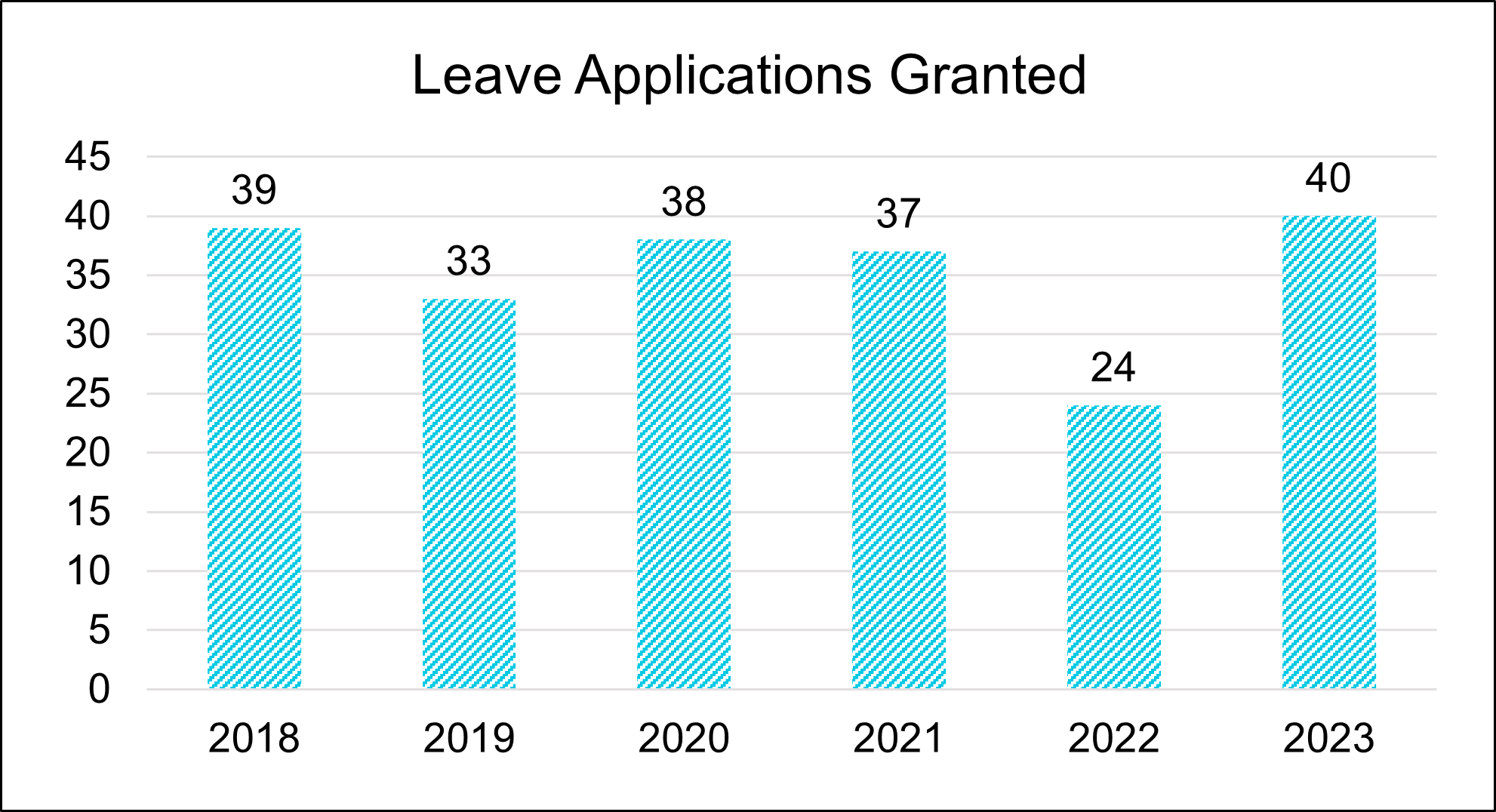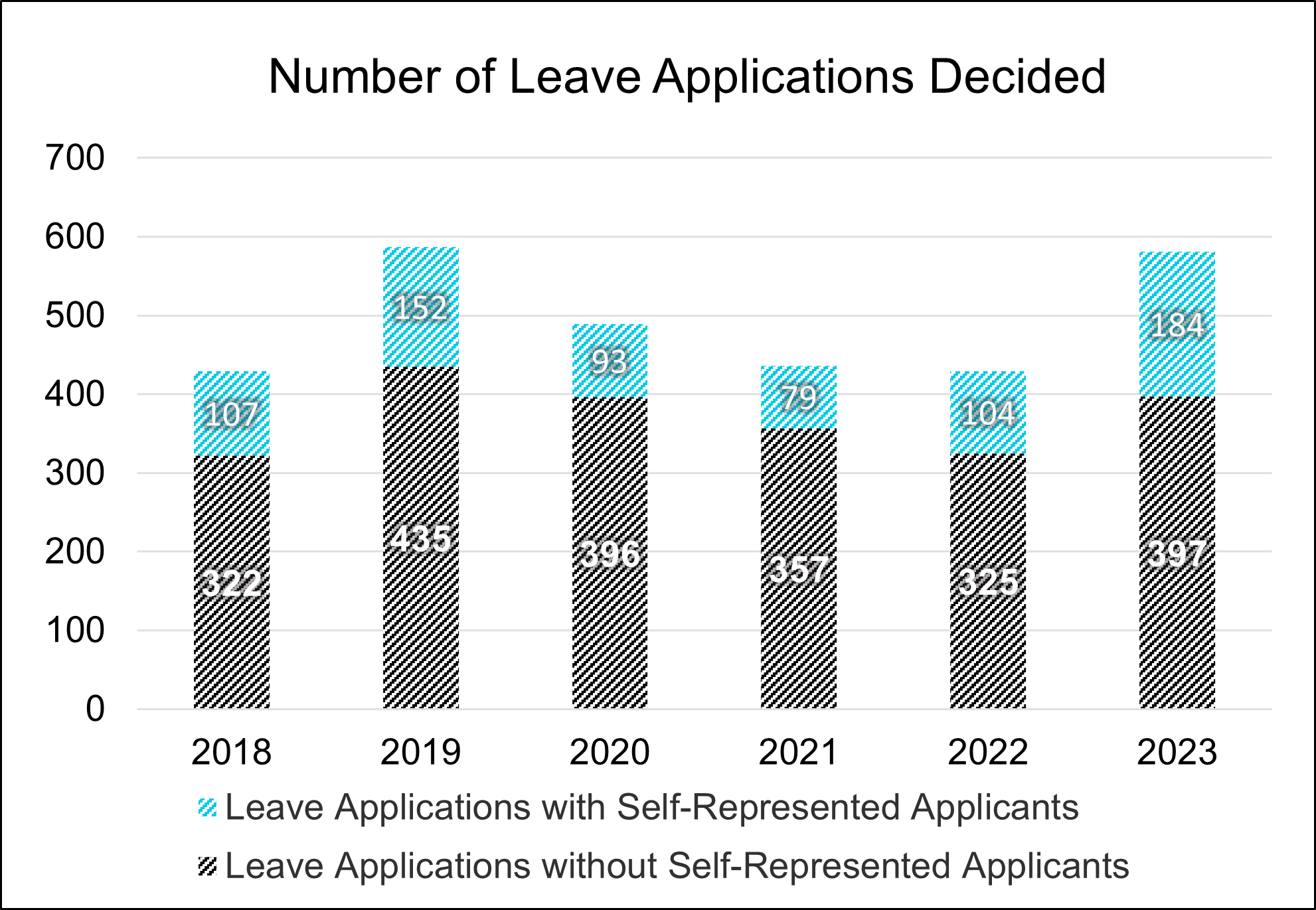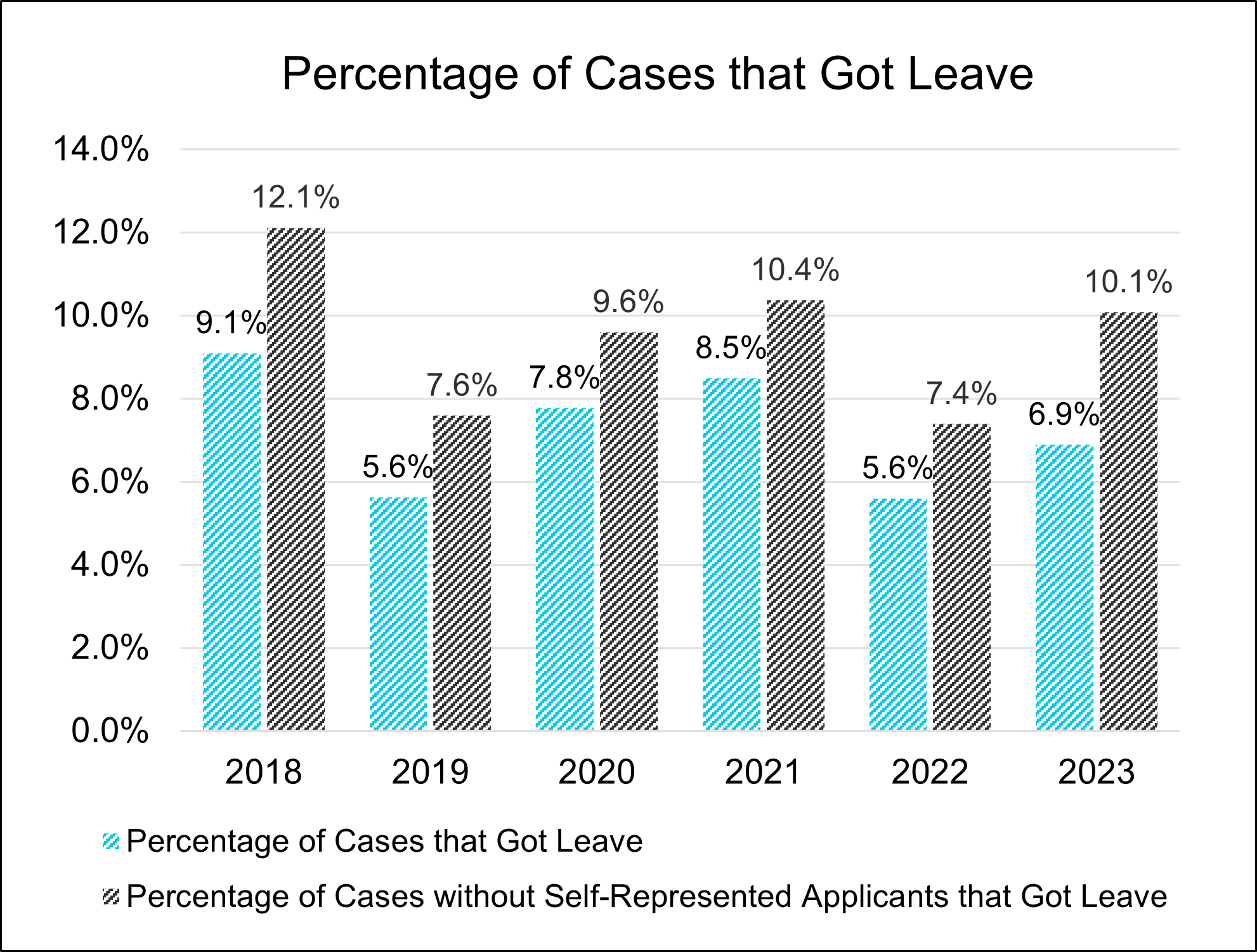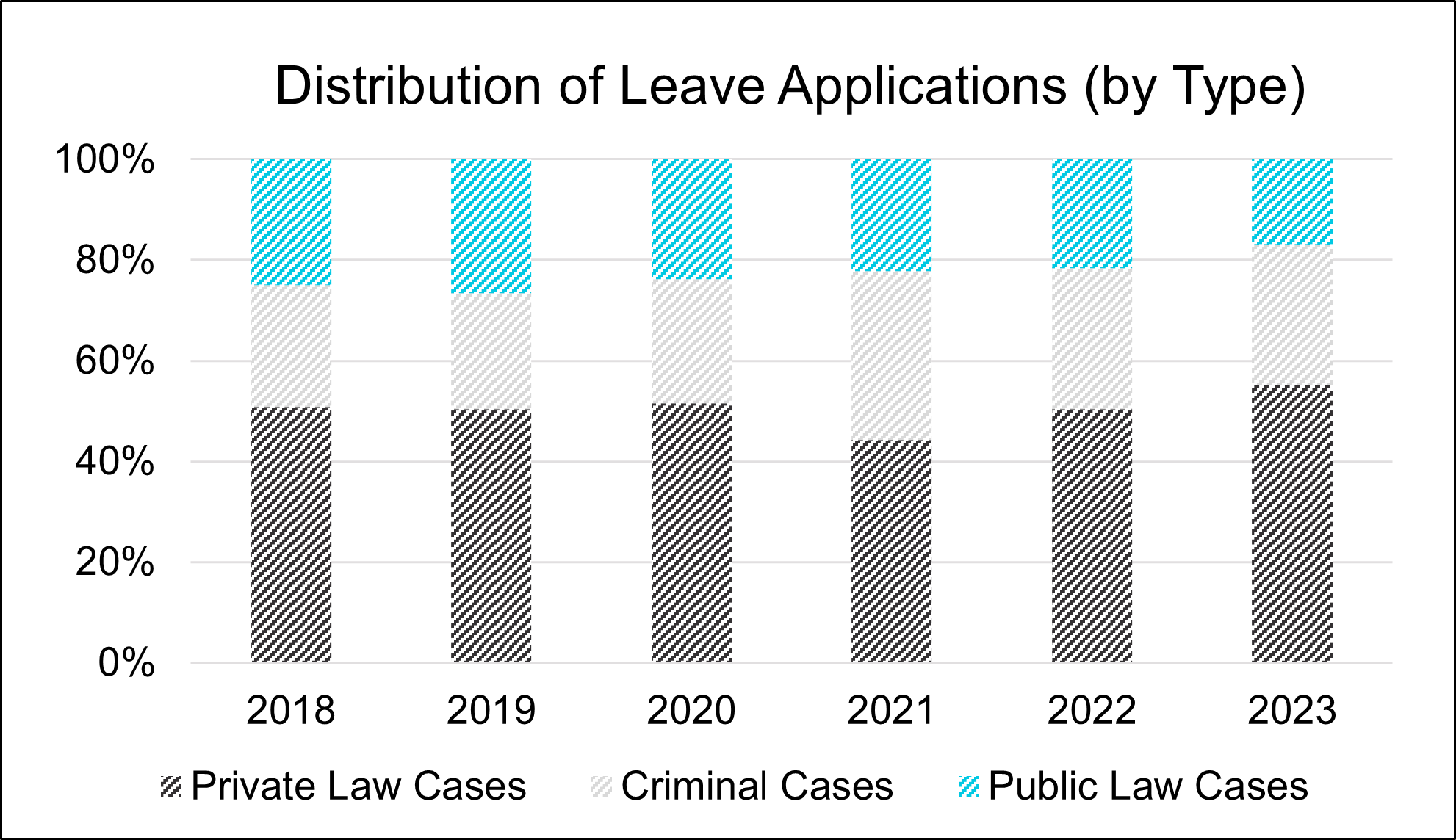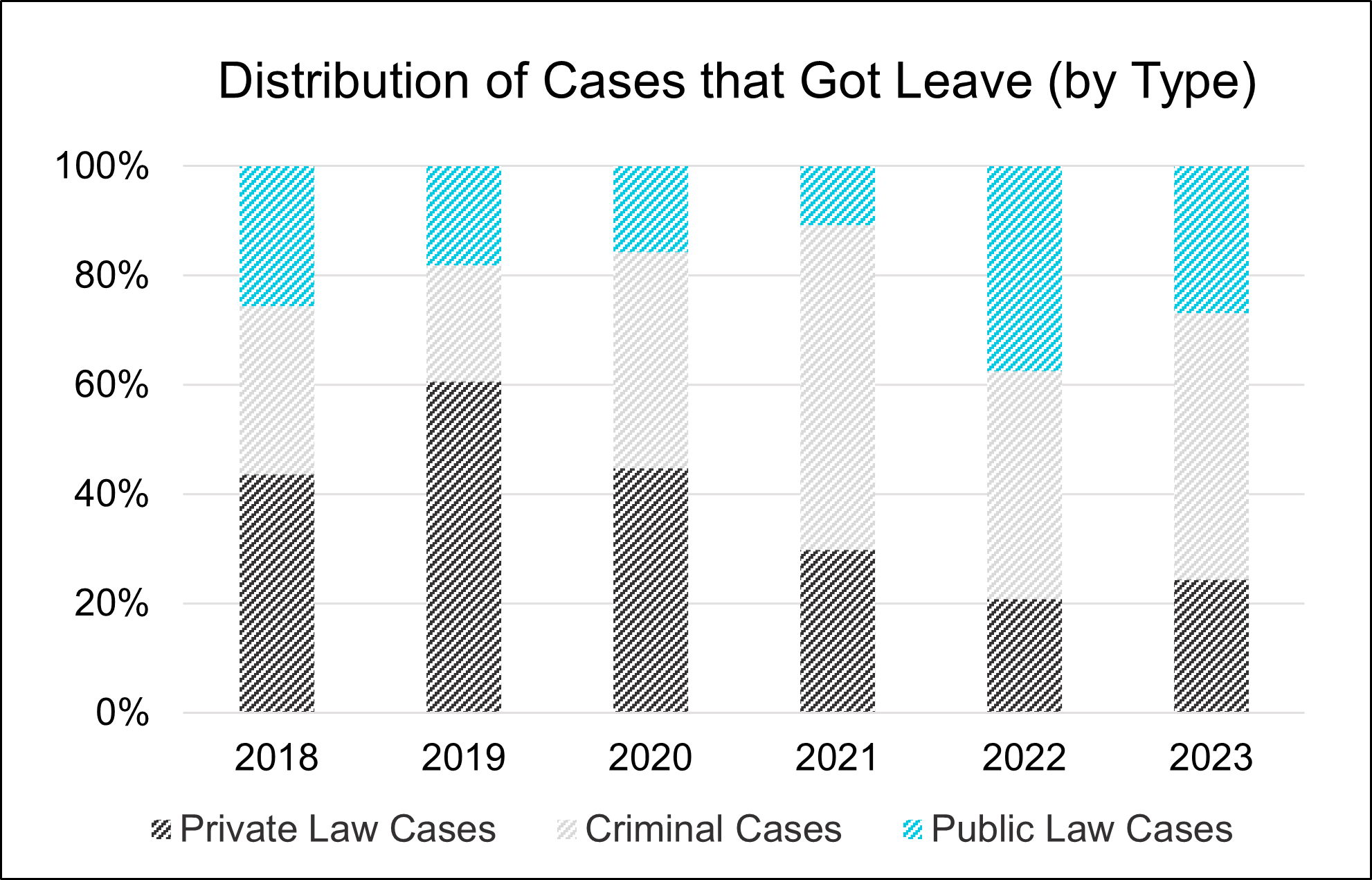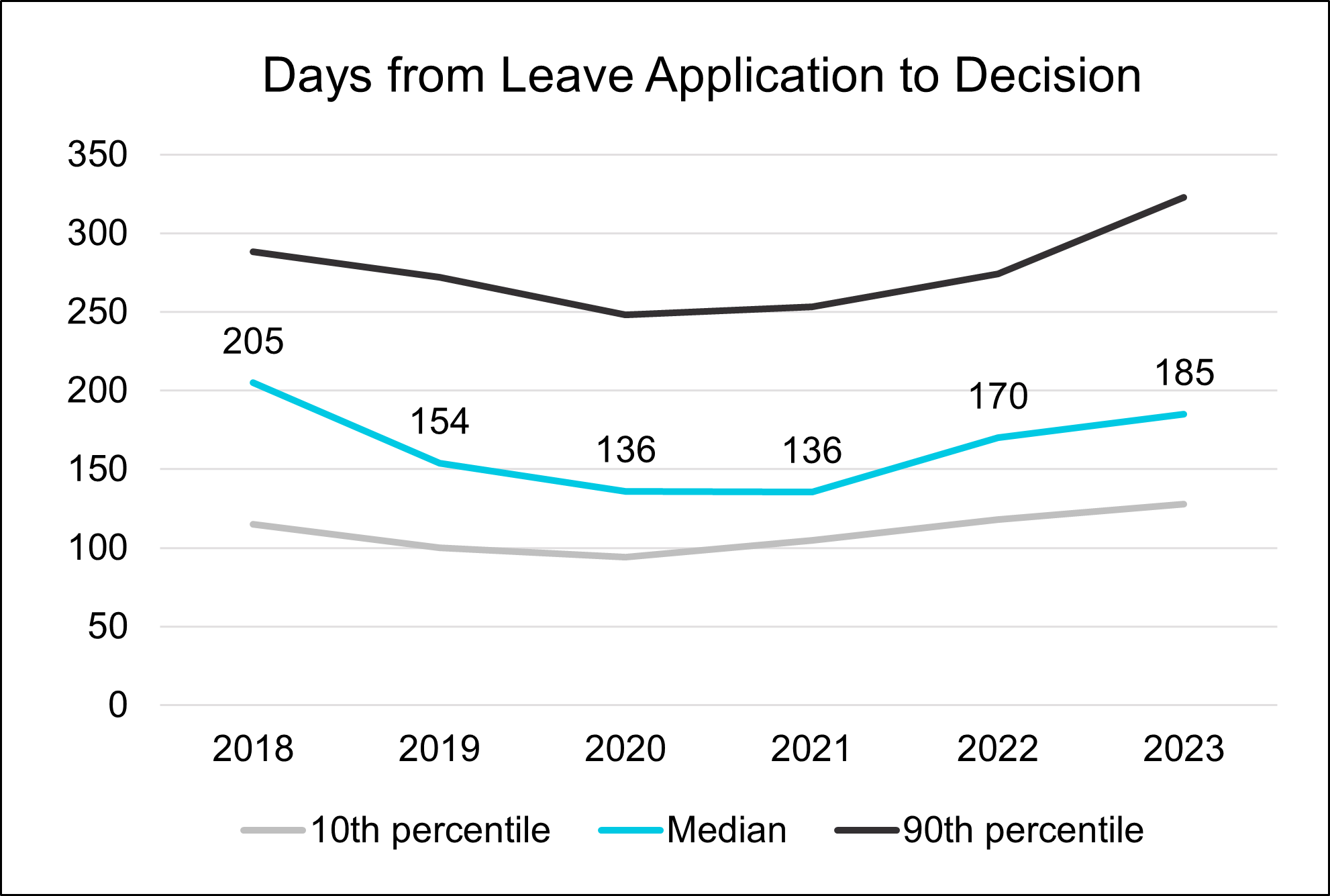Getting Leave to the Supreme Court of Canada: 2023 by the Numbers
Our readers know that we maintain a database that includes information relating to every Supreme Court of Canada leave decision from January 1, 2018 onward. While we use that database to maintain a machine learning model to predict the likelihood of particular cases getting leave to appeal, we also use it to look at trends at the Court more generally. In this blog post, we provide a year in review of the Supreme Court of Canada’s leave application decisions in 2023.
The Number of Leave Applications Granted Returns to More Normal Levels
In terms of the number of leave applications granted, 2023 represented a return to normalcy after a very unusual 2022. 2023 saw the Supreme Court of Canada grant leave to appeal in 40 leave applications. This is a significant increase from the historical low of just 24 cases in 2022. Indeed, with 40 cases, 2023 is the highest year (by a small margin) since we started maintaining data.
Both More Decisions and a Higher Grant Rate are Drivers
The increased number of leave applications granted in 2023 compared to 2022 was driven both by an increased number of leave applications, as well a higher percentage of applications being granted leave.
As set out in the graph below, 2023 saw a substantial increase in the number of leave applications decided overall.
To conduct an apples-to-apples comparison of the rate of applications being granted, it generally makes sense to exclude leave applications brought by self-represented litigants, because the rate of leave applications being granted where the applicant is self-represented is nearly zero. As set out in the graph above, a large portion of the increase in the number of leave applications in 2023 was in leave applications where the applicants were self-represented. Once the applications brought by self-represented litigants are removed, the increase in leave applications in 2023 persists, but it is more modest. The number of leave applications decided in 2023 where the applicant was represented by counsel was higher than in 2022, though it was not out of line with the numbers otherwise in recent years.
Also contributing to the increased number of leave applications being granted was an increased rate of leave applications being granted. As set out in the graph below, the Supreme Court of Canada granted leave to appeal in 6.9% of cases in 2023. While a higher rate than 2022, this rate is still below 2020 and 2021. However, once self-represented leave applicants are filtered out, the rate of leave applications granted increases to 10.7%. This is a substantial increase over 2022, and is roughly in line with the rate of leave applications granted in 2020 and 2021.
Private Law Cases on the Decline?
In terms of the subject matter, while we keep very granular data about the types of cases that the Supreme Court of Canada grants leave to, for present purposes its useful to group cases into three broad categories: private law cases, criminal cases, and public law cases.
Our data shows that in terms of subject-matter of leave applications brought to the Supreme Court, over half of those leave applications (55%) were private law cases, with criminal cases taking the lion’s share of the remainder.
However, when it comes to leave applications granted, the landscape shifts. As seen in the graph below, private law cases formed a relatively small percentage of leave applications granted in 2023, with just 25% of leave applications granted being private law cases. Rather, the lion’s share of cases in which leave was granted in 2023 were criminal law matters.
The chart above appears to show that there has been a downward trend in the percentage of the leave applications granted that raise private law issues over the period in our dataset. However, this period in our dataset is relatively small, and it remains to be seen whether recent years are an aberration or whether there is a longer-term trend away from private law cases.
The Timeline from Leave Application to Decision
While 2023 saw a welcome return to normalcy in terms of the number of leave applications granted, it also saw a less positive return to normalcy in terms of the length of time it took the Court to decide leave applications.
Between 2018 and 2020, the Court was deciding leave applications increasingly quickly with the median number of days to a leave application decision dropping from 205 days to just 136. However, after holding constant over 2021, those numbers have crept back up. In 2023, the median case took the Court 185 days to decide.
These trends appear to be affecting all manner of cases before the Court in both the tenth percentile and ninetieth percentile of cases by length of time from application to decision and shows similar trends as the median. If these trends persist, the typical leave applicants with decisions coming out in 2024 can likely expect to wait one to two months longer for a decision on a leave application than they would have waited just a few years ago.
Conclusion
Overall, the data for 2023 is reassuring in the most important respect: in terms of the number of cases in which leave was granted, the Supreme Court showed that the historically low number of cases granted leave in 2022 was an aberration. Rather, 2023 shows that the Supreme Court intends to return to normalcy and create a reasonable pipeline of appeals to be argued.
For civil and commercial litigators, the mere rise in leave applications granted generally may be of little comfort. After a flurry of significant private law cases in the late 2010s and even through 2020, the Supreme Court of Canada has been granting leave to and deciding fewer significant private law cases in recent years. Civil and commercial litigators will no doubt be hoping that the pendulum will swing back soon.

